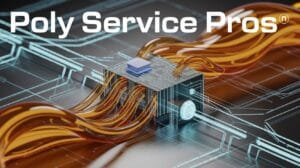Running a concrete-raising business is a lot like balancing on a tightrope. On one hand, expenses are a constant challenge, while on the other hand, there is a vast expanse of potential profits waiting to be realized. Successfully managing your finances requires not only frugal spending but also strategic spending. This practical guide is designed to assist small business owners in striking a balance between saving money and making profitable strategic investments.
1. Making Every Penny Work Hard
Spend Money if it Saves or Makes Money
Anytime I accept a business expense, I ask myself if it will save me money down the road or if it will result in somehow making me money.
Let’s keep it real: you need solid, reliable workhorses to get the job done, not shiny show ponies. Don’t get me wrong, you need reliable equipment that looks good, but whether it’s vehicles or tools, the aim is to get the job done efficiently, not wastefully. Is a high-trim package for a pickup truck going to make you money? Absolutely not. We run newer trucks, but they’re WT’s not XLT’s! Do we need good tools? Yes, but we don’t spend the money for Snap-On! The same goes for your workspace. A functional spot to park equipment and handle maintenance and administrative tasks is all that’s needed. We utilized used cubicles and mid-grade office furniture instead of new high-end stuff.
The fact is that everything adds up. The problem can be getting into the habit of thinking a little more here and there isn’t a big deal, when it can become a very big deal.
The Spare Parts Game-Changer
Here’s a savvy tip you might not be aware of: keep a stockpile of spare parts, particularly those that are considered consumable. This could include having pump rebuild kits, a spare injection gun, a transfer pump, or even a hammer drill readily available. It’s not like these things “might fail”—they will fail. Yes, it’s spending money upfront, but think about it. Having those items prepared can significantly reduce your downtime costs. It’s like first aid for your business—you don’t know when you’ll need it, but you’re glad you have it when you do.
2. Smart Choices for Equipment and Tech
Keeping It Real with Office and Field Gear
Not everything needs to be top-shelf. Are you or your office staff working on cloud-based systems? They’ll be just fine with Chromeboxes instead of high-end PCs. Chromeboxes are relatively inexpensive, fast, and not prone to viruses like Windows-based machines. And office furniture? Comfortable and functional furniture will suffice, eliminating the need for fancy items when used gently.
Where Not to Skimp: Safety and Reliability
But here’s the flip side: don’t cut corners on safety or field equipment. Good-quality personal protective equipment (PPE) is a must-have to shield against hazards like respirable silica dust. And reliable lifting gear? Non-negotiable. It’s about getting the job done safely and efficiently, reducing callbacks, and keeping your reputation solid.
3. Spending Money to Make Money: Marketing
Marketing: Own It
Investing in marketing is like planting seeds for your business’s future growth. And we’re talking about the kind of seeds you own outright—your website, brochures, video content. These are assets that keep on giving, unlike digital ads that vanish the moment you stop paying. It involves creating a lasting brand presence that attracts customers in the long run.
4. The Maintenance Advantage
Quality Maintenance Equals Money Saved
Investing in proper maintenance is a wise decision. Regularly investing in quality oil, filters, and dedicated, scheduled maintenance time isn’t just upkeep; it’s safeguarding your investment. Well-maintained equipment runs better and lasts longer, saving you big on potential repairs or replacements down the line. Think of it as ensuring your tools are always ready to roll, just like your business.
Think about how to keep your equipment as cool as possible and as dust-free as possible. Heat and dust are two of the biggest factors to consider when trying to improve the longevity of your equipment.
If you’re not confident in how to properly maintain your equipment, stop everything and take the time to learn about it. This equipment has been around for a long time, and there are lots of experienced people that can help. Reach out to your supplier and ask them to walk you through good maintenance practices. Also, unless you have other good repair options readily available to you, learn how to rebuild pumps, replace hoses, and troubleshoot common problems. It’s imperative that you have a good understanding of how everything works!
5. Investing in Your Team
Paying for Loyalty and Skill
Last but definitely not least, let’s talk about your crew. Skilled employees are the backbone of your operation. Training someone new is a costly and time-consuming affair, especially in a specialized field like ours. In most areas, your not able to simply run an ad for a seasoned concrete-raising technician; they’re just not there. Trusting this type of work to someone who’s not properly trained or experienced can land you in a heap of trouble. Paying a competitive wage to keep your experienced workers is an investment in your business’s efficiency, quality of work, and ability to grow. It’s about creating a stable, skilled team that grows with your business, not away from it.
Wrapping It Up
Navigating the financial waters of a concrete-lifting business means being savvy about where your money goes. It’s about investing in the right places—where it saves you more down the line or makes you even more in return. From the practicality of spare parts to the strategic investment in marketing and the undeniable value of a loyal, skilled team, smart spending is about making informed choices that fuel your business’s growth. So, here’s to spending wisely and making every dollar work as hard as you do.




